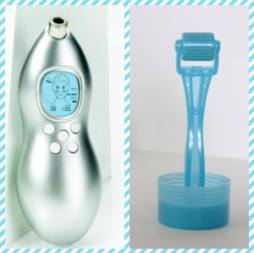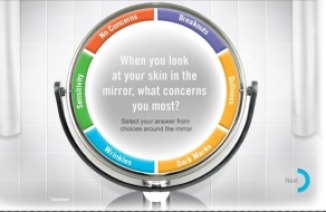 For many years, women believed they could do little or nothing about the state of their skin and the ravages of aging. Today, we now understand that genetics account for just 20% of visible aging changes, and the remaining 80% depends on habits and lifestyle. By becoming an active participant in the quest for healthier, more attractive skin, we all have the opportunity to look and feel as young as we choose.
For many years, women believed they could do little or nothing about the state of their skin and the ravages of aging. Today, we now understand that genetics account for just 20% of visible aging changes, and the remaining 80% depends on habits and lifestyle. By becoming an active participant in the quest for healthier, more attractive skin, we all have the opportunity to look and feel as young as we choose.
A cornerstone of any anti-aging routine is exfoliation. When you’re young, skin cells turn over every 28 to 30 days, giving skin that healthy-looking, fresh glow associated with a youthful appearance. Over time, this process of renewal slows, so much so that by the time you’re 40, it could take 50-plus days for the outermost skin to turn over. When dead cells don’t slough off as rapidly, the very top layer of skin gets thicker, appearing almost stale, and the dead cells can pack into your pores, making them look larger. This is why exfoliation is so important—it assists the natural shedding process and reveals the newer, fresh skin cells below.
over every 28 to 30 days, giving skin that healthy-looking, fresh glow associated with a youthful appearance. Over time, this process of renewal slows, so much so that by the time you’re 40, it could take 50-plus days for the outermost skin to turn over. When dead cells don’t slough off as rapidly, the very top layer of skin gets thicker, appearing almost stale, and the dead cells can pack into your pores, making them look larger. This is why exfoliation is so important—it assists the natural shedding process and reveals the newer, fresh skin cells below.
 Exfoliation can take many forms, and we recommend incorporating macro- and micro-exfoliation into your routine for best results. Once-weekly macro-exfoliation sweeps away up to five-million dead skin cells in just five minutes, leaving behind smoother, healthier-looking skin and a more luminous complexion. In addition, our clinical studies show that daily use of a cosmetic, non-invasive micro-exfoliating roller, in conjunction with retinol and peptides, can help you achieve visibly firmer, younger-looking skin. Both processes can be done together, just not on the same day.
Exfoliation can take many forms, and we recommend incorporating macro- and micro-exfoliation into your routine for best results. Once-weekly macro-exfoliation sweeps away up to five-million dead skin cells in just five minutes, leaving behind smoother, healthier-looking skin and a more luminous complexion. In addition, our clinical studies show that daily use of a cosmetic, non-invasive micro-exfoliating roller, in conjunction with retinol and peptides, can help you achieve visibly firmer, younger-looking skin. Both processes can be done together, just not on the same day.
Thanks to great strides in skincare science, there’s no reason to fear Father Time.
Do you exfoliate regularly?
Need more information? Find out what’s right for you…click below 🙂

